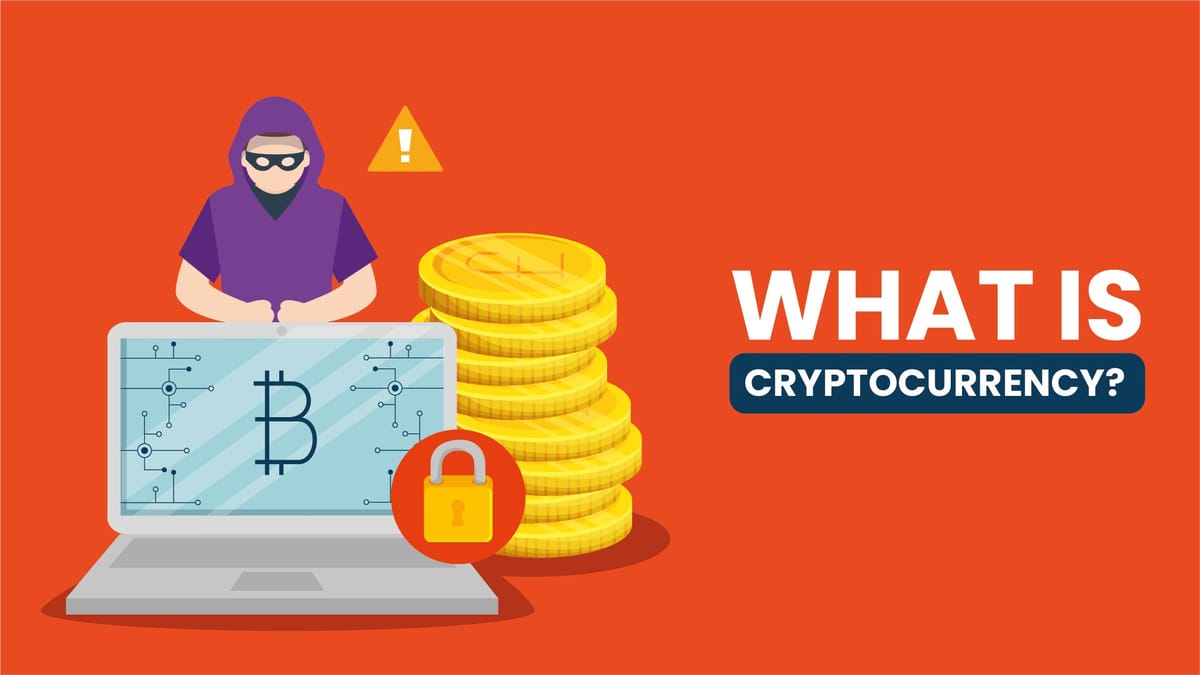How to Secure Your Cryptocurrency? Part-1
The Colonial Pipeline ransomware attack in 2021 raised questions about crypto security, highlighting lost BTC and challenges in recovering stolen funds.

Most people with an interest in cryptocurrency have heard about the Colonial Pipeline incident. In June 2021, a ransomware attack forced Colonial Pipeline to shut down its 5,500 miles of supply pipelines disrupting the US East Coast supply of fuel.
To get out of its predicament, Colonial Pipeline paid the cyber attackers $4.3 million in bitcoin to put an end to the digital siege. As per the Justice Department, Colonial Pipeline paid 75 BTC to the hackers.
What stands out about this incident is that federal officials tracked down 63.7 BTC paid to the hacking collective DarkSide, and seized it. It was a rather surprising turn of events since cryptocurrencies have over the years been regarded as a Wild West of sorts. Authorities have time and time again referred to BTC as currency for the underworld.
A decade since the inception of cryptocurrencies, users have lost billions worth of digital currency investments to hackers. More surprising is the fact that 3.7 million out of 21 million BTC is lost to the ether. This is about 20% of all BTC in circulation and is worth over $158 billion at the current BTC price.
Many cryptocurrency investors might not know this, but you can lose your claim to your digital currency assets by simply losing your private keys or forgetting your crypto wallet’s seed or recovery phrase. Such incidences may happen because of poor cryptocurrency storage and safety protocols or the demise of a crypto holder.
As an illustration, James Howells, a British man, tossed into the garbage, a hard drive that held the credentials of 7,500 BTC in 2013. In another instance, when the QuadrigaCX exchange founder died, exchange users lost over $190 million worth of digital currencies. He alone supposedly held the exchange’s digital currency credentials.
Even more intriguing is the fact that 1.1 million of the out-of-circulation 3.7 million BTC is Satoshi’s stash. When Satoshi Nakamoto launched the Bitcoin blockchain back in 2009, he mined about 1.1 million BTC but never touched it before his disappearance. For this reason, the stash remains out of circulation.
This begs the question: if the Feds could seize the Colonial Pipeline BTC ransom, why can’t authorities help recover crypto investments lost to hackers or negligence? As it stands, cryptocurrency investors have lost over $11 billion worth of crypto funds to hackers in the space in a decade.
Why have authorities not stepped in to stem rampant crypto crime, the latest being the $600 million Poly hack in August 2021? To answer these questions, we will first delve into cryptocurrencies and how they work.
Cryptography and Cryptocurrency
What is a Cryptocurrency?
Do not be fooled by the shiny gold or silver-colored images of crypto coins you see online. Cryptocurrencies are but software or code. They do not have a physical form but are records stored using blockchain technology.
The word cryptocurrency is a blend of the words, currency, and cryptography. So, we can say that cryptocurrencies are a digital representation of value that leverages cryptography and blockchain technology for function.
What is Currency?
Currencies are as old as humanity. Millennia ago, communities would use barter trade to exchange value. This barter trade system had certain inefficiencies that led to the emergence of the current currency system. Traders eventually settled for paper or metallic currencies because they are durable and portable.
Modern currency has features such as uniformity, divisibility, and acceptability and is limited in supply. One thing that distinguishes currencies from other items of value is that currencies derive value from the importance that their users place on them.
To this end, the paper or metal that makes government-backed money is not worth much. That said, fiat currencies are a medium of exchange because most people accept their use. Consequently, they are also a store of value and a unit of measurement.
Currencies help society exchange value and communicate the price of goods, allowing them to hold on to their wealth as well. Digital currencies are virtual representations of money. They are currency because their users accept them as a medium of exchange.
What is Cryptography?
Cryptography was born out of the human need to communicate and share information selectively. It is a word derived from the Greek word Kryptos, meaning ‘hidden’. Cryptography is closely linked to encryption, or the act of scrambling data to ciphertext, then back to ordinary text or numbers upon arrival.
The oldest known form of cryptography is the Egyptian hieroglyphs. That said, cryptography came into itself in AD 700, when Arab mathematicians created the first ciphers or secret code writings. The rise of papal states, and the European Renaissance put cryptography in fashion, moving it to a sophisticated science by the 19th century.
Cryptography found a mass use case in 20th-century wars. As an illustration, the decryption of the Zimmermann Telegram in 1917 led to the USA’s declaration of war on Germany. By World War 2, cryptography had become a complex mathematical concept, leading to the development of the Enigma rotor machine and advanced cryptanalysis methods.
The British employed their best mathematicians and chess masters to break the German Enigma encryption. Its decryption helped the Allies sink warships in the Atlantic, giving them victory in the World War.
After the Cold War, governments sought to keep cryptography from public use. They outlawed the use of encryption standards that their intelligence agencies could not control and decrypt. This decision led to the Crypto Wars.
Digital privacy activists took to the interweb warning of an oncoming Orwellian society should the world go into the electronic and digital communication age without the aid of data encryption systems. In the 1970s Dr. Whitfield Diffie and Dr. Martin Hellman published “New Directions in Cryptography”, moving cryptography from military control to the public sphere.
It is their work that led to the discovery of digital cash systems in the 1980s. Dr. David Chaum, a cryptographer, was the first inventor of digital cash. He leveraged Dr. Whitfield Diffie’s research on cryptography and the US government’s “Data Encryption Standard” proposing blockchain technology.
He launched the defunct DigiCash, the first virtual currency in 1995. The electronic age helped create effective cryptography that ordinary citizens can use to keep digital communications away from third parties or malicious actors.
“End-to-end encryption” emerged, helping encrypt chat, messaging, and email systems, keeping eavesdroppers out of personal communications. The Crypto Wars still rage as law enforcement agencies seek exceptional access to secured devices and encrypted communications. Their clamor for control places cryptocurrencies such as bitcoin in the crosshairs of law enforcement agencies.
Modern cryptography combines an algorithm and a key. Both tools transform data into encrypted form. An encryption standard is safe as long as no third party can determine the content of the text that it has encrypted.
There are three main types of cryptographic standards in use today.
- Symmetric cryptography
Symmetric cryptography uses one key to encrypt and then decrypt data. To this end, should you use symmetric cryptography, you would need to share your key with the person to whom you are sending private information. Symmetric cryptography’s shortcoming is that a malicious actor could intercept the key while it is in transit to the recipient.
- Asymmetric cryptography
Asymmetric cryptography is a safer alternative to symmetric cryptography. It issues two keys. One for encryption and another for data decryption. For this reason, the users sending encrypted data between them have a private and public key.
Private keys decode decryption and should be kept secret. The public key, however, can be publicly distributed since malicious parties can only intercept the information within it when they have a corresponding private key.
As an illustration, when Alice wants to send John a message, she will encrypt it using a public key. John will then decrypt Alice’s message using his private key. Should John expose his private key to the public, any person could intercept the message that Alice had sent to him.
End-to-end encryption, the cryptography technique that encrypts your browser, WhatsApp, or email messages is a form of asymmetric encryption. Only the recipient and sender can read these messages. Theoretically, government agencies or hackers cannot access the content of your messages should they hack WhatsApp or Google servers.
To access the content of your messages, they would have to get hold of your mobile phone or laptop storage devices to read the decrypted content of your messages. This is how cryptography provides privacy in electronic communication.
- Hash functions
Hashing creates irreversible one-way data protection systems. When you hash a message, you cannot reverse it back to its original format, protecting it from change. Cryptographic hash functions make computation reversal infeasible, making hashed data immutable as per the difficulty of the hashing algorithm.
Benefits of Cryptography
Cryptography gives data communication integrity and confidentiality. It also helps authenticate users without the need for an intermediary. On top of that, it prevents denial of truth.
Blockchain Technology
What is Blockchain Technology?
Blockchain technology is a data storage system that enhances encrypted data security. It is the antithesis of the centralized data storage system that stores data in servers or databases. Blockchain technology groups data into blocks encrypts them using a hashing algorithm, then distributes these data blocks to a distributed network of computers known as nodes.
To this end, no single entity can alter, destroy, or control data stored in a blockchain network. They would have to gather all data blocks stored in distributed ledgers and change them to establish one version of the truth.
For this reason, the security of a blockchain network lies in its decentralization.
Part of the reason Bitcoin is so popular is that no one entity can control or manipulate it. Bitcoin is highly decentralized. In essence, there are thousands of independent computers worldwide that store their blocks of data.
Bitcoin was the first successful use of blockchain technology. You can refer to cryptocurrencies such as BTC as encrypted payment messages, distributed across a decentralized network of nodes.
The Pseudonymity of Blockchain Transactions
To this end, when you purchase cryptocurrency, you do not receive any physical representation of your digital currencies. All you will receive is a public key and a private key. The Bitcoin blockchain merely creates lists of transactions. Let’s say that Alice sends 2 BTC to Bob.
Blockchain data is transparent, so an onlooker can see both Alice’s and Bob’s public keys. Generally, any interested party can tally or audit a decentralized blockchain’s data. What they theoretically cannot do is access Alice’s or Bob’s private key.
On a blockchain, these entities are just but a series of public key numbers such as 12GHT34lkjTH76NMout09745nbd45jkdrw5 sent 2 BTC to 34HGNR456rtyf4509lkhTYHRopte89dbawe on Sep. 12, 2021, at 12.03.
To this end, a casual onlooker will have a troublesome time deciphering the identity behind these public keys. A determined tech-savvy entity such as a hacker or law enforcement agency could study certain parameters and try to track down the identity behind a public key.
Should they figure out Bob’s identity, then all they need is to access both their private keys and take over their 2BTC. To this end, ordinary blockchain transactions are not anonymous but pseudonymous.
Should any person link your identity to your pseudonym or public address, then they could figure out just how much you own by simply trailing your following your public address’s breadcrumbs on open-source blockchain data. Cryptocurrency transactions have a unique set of threats that you learn about.
That said, blockchain technology and cryptography give digital currencies certain advantages over ordinary government-backed currencies. Just like the digital blogs and news websites replaced the old school newspapers, digital money could append to the legacy fiat system.
You can send or receive cryptocurrencies from any person across the globe and not have to open a bank account to do so. On top of this, you do not have to wait for days for the transaction to materialize or pay hefty charges for it.
Like the internet lowering the playing field, and easing access to information, cryptocurrencies could enhance financial inclusion by eliminating intermediaries such as banks and payment processors from the financial sector.





